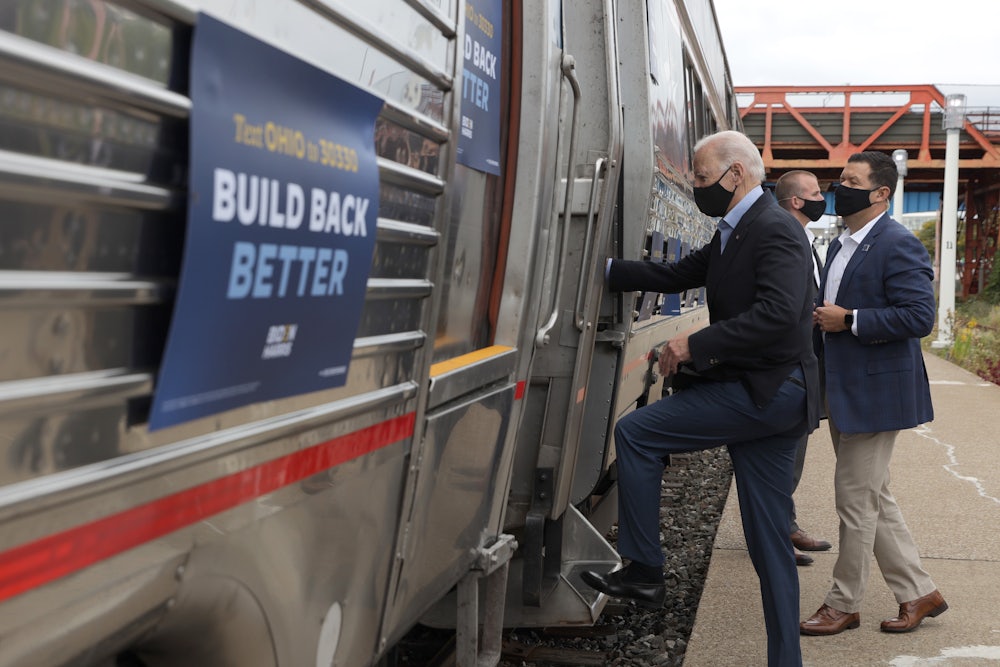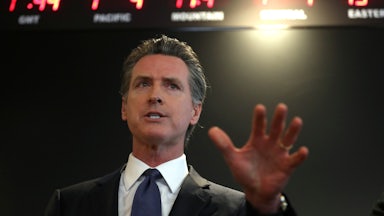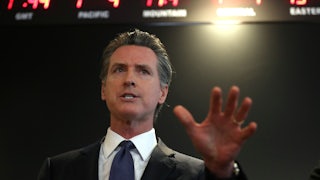“Amtrak Joe” loves trains. He has taken Amtrak round trips between Delaware and Washington, D.C., some 8,200 times. He almost took one to his presidential inauguration, and he actually did take one to his first vice presidential inauguration, later waxing sentimental about the experience in a cover story for Amtrak’s Arrive magazine. “I saw our future the same way I always did: looking out Amtrak’s windows,” he wrote.
Biden faces some hurdles when it comes to translating his train enthusiasm into policy: He’s in charge of a sparsely populated, individualistic country where a third of our passenger train use occurs in just three municipalities. Our attitude toward public transportation can be best summed up by Elon Musk, the guy who is, by dint of his power and influence, somehow treated as our nation’s leading authority on transportation. “I think public transport is painful. It sucks,” Musk told a crowd in 2017. “Why do you want to get on something with a lot of other people, that doesn’t leave where you want it to leave, doesn’t start where you want it to start, doesn’t end where you want it to end? And it doesn’t go all the time.” Even America’s most ardent train supporters acknowledge that expanding passenger rail service is anathema here. Sean Jeans-Gail, lobbyist for the Rail Passengers Association, told The New York Times in January that new train stops are “a tough leap for a lot of people.” Biden has personally seen this, having been vice president when Barack Obama’s high-speed rail program failed to get off the ground.
Still, surely electing a train fan to the highest office in the land should have some effect. And Biden seems game: To paraphrase one of America’s greatest locomotive folk heroes, he thinks he can. In December 2019, he claimed that his presidential administration “will spark the second great railroad revolution to propel our nation’s infrastructure into the future and help solve the climate emergency.” If he’s set on that, researchers say, there are a few lessons he could learn from previous failed efforts.
Train expansion fits well with Biden’s climate goals. According to a 2019 report by the International Energy Agency, “aggressive, strategic deployment of rail can lead CO2 emissions in global transport to peak in the late 2030s.” And according to Shoshanna Saxe, a professor of civil and mineral engineering at the University of Toronto and an
activist for public transportation in North America, Biden’s timing is fantastic. “There’s going to be an opportunity to invest for the future coming out of Covid. There’s a lot of stimulus money likely coming. There’s pent-up demand to do things, and we can direct that toward making better shared infrastructure, and invest in public transit,” she said.
It’s worth noting that Covid-19 can spread on trains and that this has scared many people away from public transportation, resulting in contractions of train service. But as vaccination efforts expand, Saxe hopes Covid won’t become an excuse for a permanent shift to the personal bubble of an automobile. “Ten years from now, the world will not be defined by Covid in the same way that it is now, unless we choose to make it so,” Saxe said. Biden’s incoming transportation secretary, Pete Buttigieg, has already announced his support for his boss’s railroad program, saying, “The department should promote, help to develop, and fund passenger rail in order to bring America’s railroads into the twenty-first century.”
The United States has a sad history of investing its infrastructure money in cars. “For many the first thing that comes to mind when you think ‘infrastructure’ is roads,” Saxe and Kristen MacAskill, a Cambridge University engineer, wrote in The New York Times in 2020. Obama’s 2009 infrastructure package delivered plenty of roads, they added, but included a railroad budget that was barely enough to build “a few miles of subway in New York or Los Angeles.”
According to Saxe’s ongoing research, repetitions of this pattern have likely scarred the public imagination when it comes to railroad construction. It’s common for big transit projects to take 30 to 50 years from inception to completion, she told me. “By the time they’re even started, the people who live near them or would want to use them have been hearing about them sometimes for more than a generation.” This presents a communication problem—one often blamed on budgets, bureaucracy, and red tape. But “from our research,” Saxe told me, “that really wasn’t the case at all. The challenge was that things get announced long before they’re funded, long before the plans are real, long before the challenging details have been sorted out. Then whatever politician happens to have announced them, it doesn’t really get started before their term is over.”
In other words, if Biden is going to convince Americans he’s kept his promise of a railroad revolution, he’d be wise to stay away from the pie-in-the-sky imaginary railroad maps that he helped hype as vice president and instead stick to “shovel-ready” railroad plans that are already budgeted and ready to go. “There are so many plans on every state and city’s shelving unit,” Saxe told me—though she cautioned that if you funnel money into those municipalities’ transit coffers in the hopes that they’ll build trains, they have a tendency to find a way to turn it into roads anyway, so “we need to be careful not to do that.”
Complicating matters further, Biden’s promise of a “second great railroad revolution” sits uneasily with those familiar with the details of the first railroad revolution, which occurred during the Gilded Age. “Parallels between the Gilded Age of the nineteenth century and today seem to be everywhere,” historian Richard White told me. But the Gilded Age was in fact marked by “disparities of wealth, defense of white privilege, strong ethnic tensions over immigration, the feeling that the United States lost its way, that democracy is no longer functioning the way it was designed—over and over and over again, just virtually everything you see in modern society.”
In the first railroad expansion, Gilded Age robber barons with famous names like Cornelius Vanderbilt, Collis P. Huntington, and Leland Stanford lucked into a series of sweetheart land deals from the government when Abraham Lincoln approved the Pacific Railroad Act of 1862, and they milked those deals for all the wealth they could, often with only a casual interest in the quality, usefulness, and completeness of their railroads, let alone the human cost in terms of Indigenous people displaced and laborers exploited, maimed, and killed.
Rapidly expanding American rail without appropriate oversight could risk repeating that history, White said. He would expect “a deep well of corruption. Vast promises are going to be made, which are not going to be fulfilled because promises are cheap. There’s going to be no safeguards for what goes on. There’s going to be all kinds of insider deals.”
This “hothouse capitalism,” which White documented in his book Railroaded: The Transcontinentals and the Making of Modern America, results from handing money to corporations to take on risks that they wouldn’t normally take, leaving the taxpayer to foot the bill for projects that may be shoddy or impossible to finish. “That’s the way that most of the subsidies for railroads go,” he said, “and there are places where clearly you can invest profitably in railroads, but if the Biden plan is going to be like the Obama plan, I don’t think so.”
The key is to embed any rail plan within a broader consideration of American transport and land use patterns, White said. If we connect every city in America with high-speed trains and charge a pittance to ride them, he said, “it makes no difference, in the wider scheme of things, until you have some feasible way to get around L.A. and San Francisco without being clogged up all the time.”
You can’t build a “railroad revolution” in isolation. The term symbolizes a complex future that our states, cities, and neighborhood councils would all have to conspire to create, requiring us to approve and build complementary pieces of local infrastructure like sidewalks, bike lanes, pedestrian bridges, and perhaps most importantly of all, neighborhoods zoned and constructed in order to accommodate all that infrastructure. In this future, we would choose to take trains because trains are simply the best way to get to our destinations.
Instead, too often—as is shown by the excess of public curiosity around the president’s beloved Amtrak from D.C. to Wilmington—trains in America are less a necessity than a novelty. To build the future not just Biden but many public transport and climate activists are hoping for, trains need to become staggeringly ordinary and practical.








